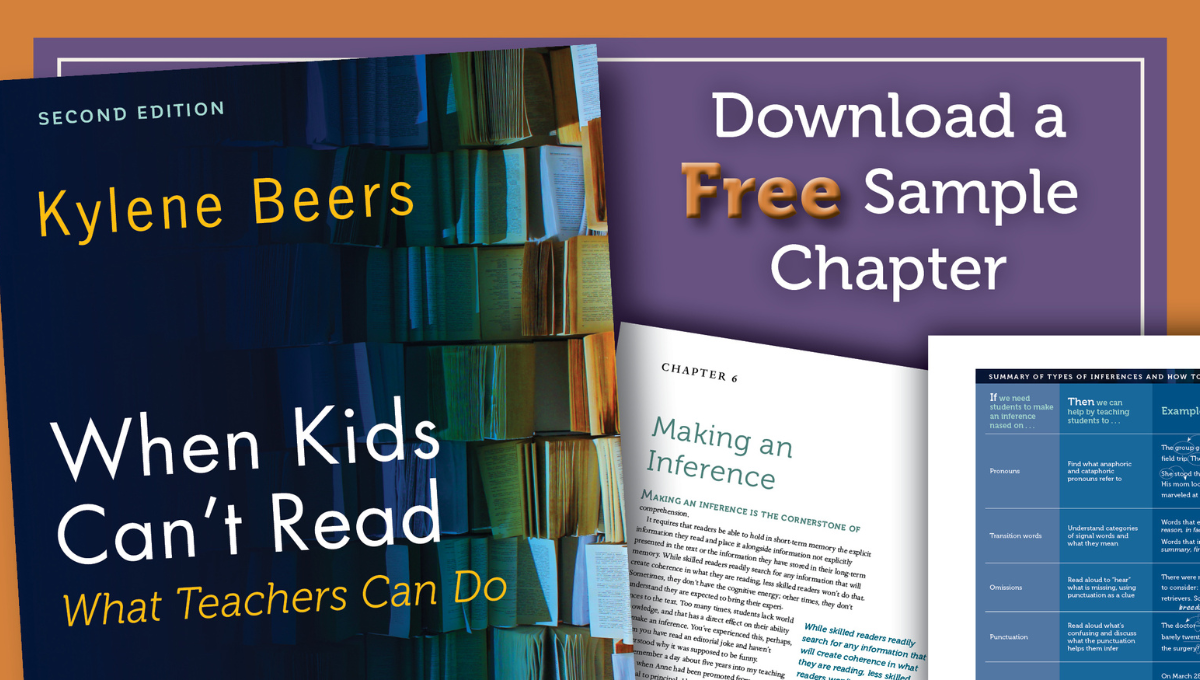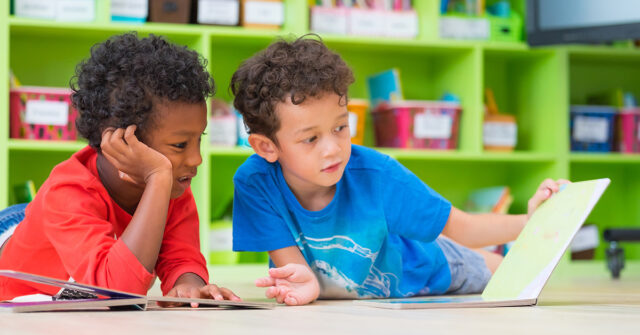
I am a strong advocate for taking students to the school library as often as possible and for filling classrooms with books. Surrounding kids with books, though, doesn’t mean they all choose books to read.
Where are the Good Books?
When we went to the library, some students would go immediately to the shelves to select a book or book series they wanted to read. Other students headed straight to the couches to sit and start reading. A third group of students wandered aimlessly through the library, walking through the stacks, looking at covers, sometimes selecting a book, most often not.
Reading a book was not on the agenda for many of these children.
One day, I asked a seventh grader from that group of wanderers why she hadn’t checked out a book.
“Are you going to tell me what all the other teachers say?” she asked.
“I don’t know. What do other teachers say?” I replied.
“They all say the library is filled with good books.”
“Well, what’s wrong with that?” I asked.
“Where are they?” she said.
“Where are what?”
“The good books. I sure don’t see them. Just where are they?”
“Tell me what you mean,” I said.
“It’s like shopping. You go to Foley’s (a very large department store in Houston at the time) and you can shop all day and never find anything. It’s why I shop at the Limited now,” she said.
I wasn’t quite following her line of thinking. “I don’t get it; why do you shop at the Limited?”
“Because it’s limited. There’s not as much to choose from. You can actually find things.”
“And tell me just how this connects to finding a good book in the library,” I said.
She was clearly frustrated at my lack of comprehension. “The library is like Foley’s. You can’t find anything,” she said.
She left me standing there, looking around at this middle school library with its massive catalog of books. Suddenly I thought of all the times I had gone into a large multi-level department store to buy one white blouse. I could emerge hours later with no blouse, not because there weren’t any but because there were too many.
This student was telling me she didn’t know the library, didn’t know authors, didn’t know genres. The library wasn't a resource. She didn't have that background knowledge. And so—like when she went shopping in a department store that was too large—she couldn’t find what she wanted.
The Good Books Box
I asked the librarian to help me with an experiment. I asked her to take a small box—the type that reams of paper come in—write “Good Books” on the side, and then fill it with eight or ten great books, books she could see students reading. I wanted her to put the box on a table the next time this class visited the library. She did just that. When we returned, some kids went directly to the shelves to search for the books they wanted. Others found their spot on the couch to start reading. The wanderers kept on wandering. Finally, a boy spotted the Good Books box. He stood staring at it, not touching any books inside.
After a while, he asked the librarian what those books were.
“Good books,” she replied.
“You’re kidding,” he said, as if he had looked for them for years and suddenly there they were, in a box, ready for reading.
Another kid walked by and asked him what he was looking at.
“Good books,” he answered.
“Really?” the second kid said. They both stood there. Finally, one asked, “So can you, like, check them out?” The librarian nodded.
Eventually, about five students checked out a book from the Good Books box.
On their next visit, the librarian and I waited to see what would happen. As students returned their books, she asked,
“Did you read the book?” Each student nodded yes.
“What’d you think?” she asked.
“It was a good book,” each student answered, somewhat amazed. They all stood there, saying nothing. The librarian and I stood there, waiting.
Finally, one student asked, “We were wondering, do you have any more good books?”
And then, this dear, amazing librarian surprised us all when she pointed to another box on a different table and said, “Sure do.”
We all turned to look at this second box, labeled “More Good Books.”
“Cool,” one kid said as they moved to look through that box.
Narrow the Choices
I’ve told the Good Books box story for many years in many places because the lesson is powerful. The Good Books box was a tool students could use to select a book. Until students are comfortable with authors, genres, and interests, it’s hard for them to find books they will love to read.
That's why we sometimes need to narrow that choice for students:
- Stand up a few books on your desk
- Put a few along windowsills
- Talk about books you want kids to read
- Have students share about a good book they are reading
- Introduce a new author and one of their books each week
- Place some books in a box labeled “Good Books”
Remember, your goal is to move the students from the box to the stacks or the library catalog, so study what types of books your students search for and choose. Pay attention to the books and book series you see students enjoying. Look for the books that produce engaged reading.
I watched this librarian point out to one student, who was reading from the Good Books box, that she always chose mysteries. Then the librarian pointed out that there was an entire section in the library devoted to mysteries.
“Where?” the child asked.
“Under that five-foot sign that says, ‘Mysteries.’ That one right there, hanging from the ceiling,” the librarian explained.
“That is so awesome,” the student answered as she saw a new level of meaning in that sign for the first time.
Offering a Variety of Books
The new edition of When Kids Can’t Read—What Teachers Can Do doesn’t include a list of good books. No matter the grade level, finding book recommendations (for everything from independent reading to small group reading instruction) is now as easy as an online search. And this kind of resource is constantly being updated.
Use your knowledge of your students to look for books they will love reading, but also for ones that fill gaps in your classroom library:
- If you don’t have many books with boys as main characters, look for those.
- If you don’t like myths or science fiction, make sure you haven’t mistakenly avoided that genre in your selections.
- Students like graphic novels, even if you do not. Are those in your collections?
- Do your books represent the diversity of this nation and this world? Racial, religious, economic, and geographic diversity? What about the author list for your classroom collection?
- Are different types of families shown in the books in your classroom?
- Have you included books with characters who are members of the queer community? If not, why not? There are books with gay characters appropriate for elementary, middle, and high school. Find the ones that fit your students’ developmental interests.
My dear friend and longtime colleague Teri Lesesne always said, “When we hand the right book to the right kid at the right time, then we’re taking the right steps toward creating lifetime readers.” Teri lived her professional life connecting children to just the right book. How lucky we would each be for others to say the same of us.

Learn more about When Kids Can't Read—What Teachers Can Do, Second Edition, A Guide for Teachers 4-12 at Heinemann.com.

Kylene Beers is a former middle school teacher who now consults in classrooms across the nation as she works with teachers and students. She is the author or co-author of numerous books on adolescent literacy and is an invited speaker at national and state conventions. She has served as president of the National Council of Teachers of English and is currently serving as a board member for the international LitWorld Foundation.



